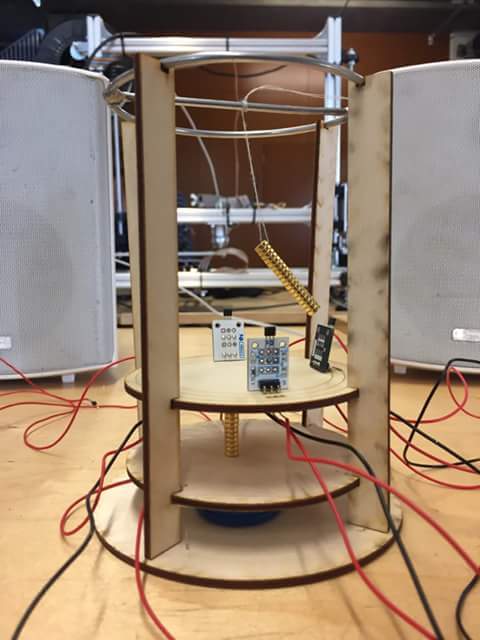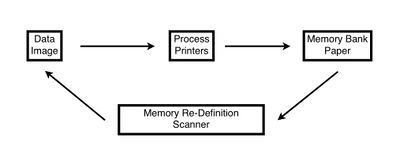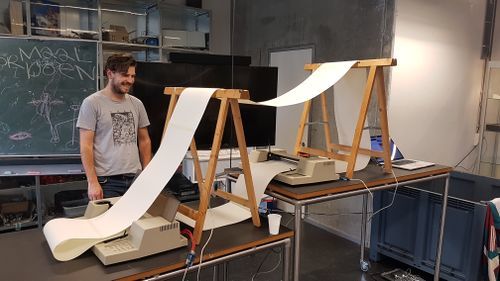User:Timoteo
Contents
My Craft
My craft suggests me to acknowledge musical parameters and non musical ones as equally important in the context of performative art. My attitude towards the process of composition firstly is to create a core idea of the piece and then consequently to let the core idea influence all the parameters forming the performance, visuals, music and social interaction are then harmonized together to create a consistent dream for the audience to explore.
To work out a complete performance is to re define my role as a composer. A musical piece in such context not only has to be of quality but has to harmonize itself with all the signs and visual messages surrounding it. To that end I need to expand my skills in defining and realizing the visual part of my performances. This involves to gaining experience with set design, light design, fine arts, video making and sculpture. Another important and correlated aspect with the first point is to learn interactive digital crafts as circuit building, Arduinoʼs application and coding. Employing these tools enhance the interaction possibilities between visual and music.
It is very important to be aware of new ideas and conception regarding art while finding your own stance in the artistic landscape. To do that I initially encountered two philosopher that changed my point of view on performative art. To be more precise I find interesting considering performative art through combining Augeʼs symbolic whole and Austinʼs speech acts.
The symbolic whole is the central idea featured in Augèʼs book “The War of Dreams: Studies in Ethno Fiction”(1999). The collective imagination and memory form a symbolic whole by reference to which the group defines itself and through which it reproduces itself at the imaginary level in the course of generations. The CIM quite clearly informs individual imagination and memories. Likewise it is a source for narrative elaborations (commentaries upon rituals, shamanic story-telling, epics) which are given form by creators with a certain degree of autonomy. The individual imagination and memory can influence and enrich the collective complex. Each work of creation, whether it takes a sociological form which is by and large collective, as in the cases of colonization and cultural re-creation, or a literary-artistic form which is by and large individual, is liable in its turn to reverberate upon both individual imaginations and the collective symbolic.
Austin’s most celebrated contribution to contemporary philosophy is his theory of speech acts, presented in How to Do Things with Words (Austin 1975). The work develop a general theory of the uses of language and of the acts we perform by uttering a sentence: a general theory of what Austin calls illocutionary force. Within the same total speech act Austin distinguishes three different acts: locutionary, illocutionary and perlocutionary. The locutionary act is the act of saying something, the act of uttering certain expressions, well-formed from a syntactic point of view and meaningful. An illocutionary act is a way of using language, and its performance is the performance of an act in saying something as opposed to performance of an act of saying something. It corresponds to the force that an utterance like “close the window!” has in a particular context: order, request, entreaty, or challenge. The perlocutionary act corresponds to the effects brought about by performing an illocutionary act, to its consequences, intentional or non- intentional, on the feelings, thoughts, or actions of the participants. According to Austin the speaker, by saying what he/she says, performs another kind of act, like persuading, convincing, or alerting, because he/she can be taken as responsible for those effects. Yet the perlocutionary consequences of illocutionary acts are non- conventional, not being completely under the speaker’s control, but rather related to the specific circumstances in which the act is performed.
In order to apply Austin’s ideas on language to Performative Art it is needed to take into account the changes in functionality between ordinary communication and art. To this end Augeʼs symbolic whole can reveal the functionality of performative art. The function of performative art is to be a conduit inside the symbolic whole, this unique human form expression holds a central role in identity development, folklore development, communication between individual and communities and human progress by elaborating information between collective and individual imagination and memory and other artifacts. Therefore Austin’s speech acts will be forming the performative experience and will operate by defining, framing and shaping the performance. It is important to notice how Austinʼs speech acts are interconnected and strive to form a performance from different point of departures, it is also important to be aware on how organically one speech act derives and reconnects to the other. This aspect suggest an equality between what historically were defined as music parameters and extra-music parameters like visuals, location choices and theatricality. The core idea of a piece goes beyond specific elements and embrace the wholeness of a performance.
As an additional consideration by using more parameters composers merely have more possibilities to define the core idea needed to be expressed and frame the performative experience avoiding formats and missing to express yourself.
By acknowledging the equality by music and non musical parameters a creator can be aware of a deeper and critical categorization of the elements that forms a performance, stimuli with a narrative line and stimuli without a narrative line. I will refer to this two prospectives as “narration” or “time temporal” and “non narration” or “timeless”. To investigate further this duality it is useful to clarify its opposite and yet congruent features.
Narration regards every elements that have a beginning and an end, in another words every elements that function with a hierarchical structure of meanings. A clear example is witnessing an event as the appearance of a thunder: first the flash of light, then the sound and then the disappearance of the natural event.
Non narration regards every elements that function without a beginning and an end, elements that have an inner interconnected structure of meaning and can be conceived outside a time order, an example are the laws of electrostatics. It is intuitive that these two prospective strife together to portray objects both in their most apparent and in their most hidden manifestation, one point of view complete the other.
Project Body Part: Eye Lens (IN PROGRESS)
Our project is set to question the human capacity of visual focus, the question is formed once we take into consideration our experience of limited focusing and Zeno’s paradox. What happens if we were to break Zeno’s paradox and have unlimited focusing, what would be possible to experience? The project will approach the subject from a synesthetic prospective, more specifically by going back and forth from sound to visuals.
Project Sensor: Magnetism
The project explores magnetism from a human point of view. In other words the project explores what we associate to magnetism, an invisible force that attracts or repel two points revealing an hidden unescapable dramaturgy.
As a first stage the team decided to reveal magnetism though sound, this stage featured:
- Building up four analog magnetic sensors and setting them on with magnets
- Computing Arduino patch to read the sensors and send the 4 values as ASCII to MAX MSP through serial port
- Computing MAX patch to read the ASCII code through serial port and re developing the values as volume control for 4 audio sources
This stage brought the team to acknowledge that the system was about revealing something, the system could slowly uncovering a message creating a dramaturgical tension of attraction. This tension was both governed by magnetism both governed by having a message appearing and disappearing.
As a second stage the team decided to compliment this tension by using a magnet setting the sensors by a pendular motion, this way at the beginning of the motion the magnet would briefly pass over the sensors and revealing short data of the message by then losing pendular motion and slowly setting over the magnets procedurally uncovering the message played as audio file. This stage featured:
- Improvising a Viola Sextet as a audio message
- Building up of a structure enabling to have a magnet as a pendulum and the four sensors as receivers
As a third stage I understood that the Sextet was not working out in the context. The Sextet, being an improvisation, ended up being a non narrative message. This caused problems once the piece was put in a conceptual context, as a non narrative message layering over another non narrative message often creates confusion and lack of depth. The third stage then featured:
- Recording of a stanza from "The Prometeus" by Shelley
As a conclusion, the narrative message layering over a conceptual landscape often works the best. The system slowly uncovers the stanza and this process creates a acceptable human analogy to magnetism.
Project AI: Unknowing Painting
Project “Unknowing Painting“ comments on the process of memory, it investigates the borders between human and artificial memory through the act of forgetting. Forgetting is a creative activity that, through transformation and procedural loss of data, continuously animates our inner life and identity definition. To comment this human condition we set a paper loop through an array of printers, a mechanical analogy for the stream of memory creation. An image, an untitled painting of an old man by an unknown artist, is initially fed to the system, then the printed rendition is scanned and sent to the printers to begin a new cycle. As we travel through the cycles, as we travel through past memories, we start encounter variations and loss of data, the face become distorted and slowly the story and emotions summoned by its shape change and get lost in the growing feedback.


